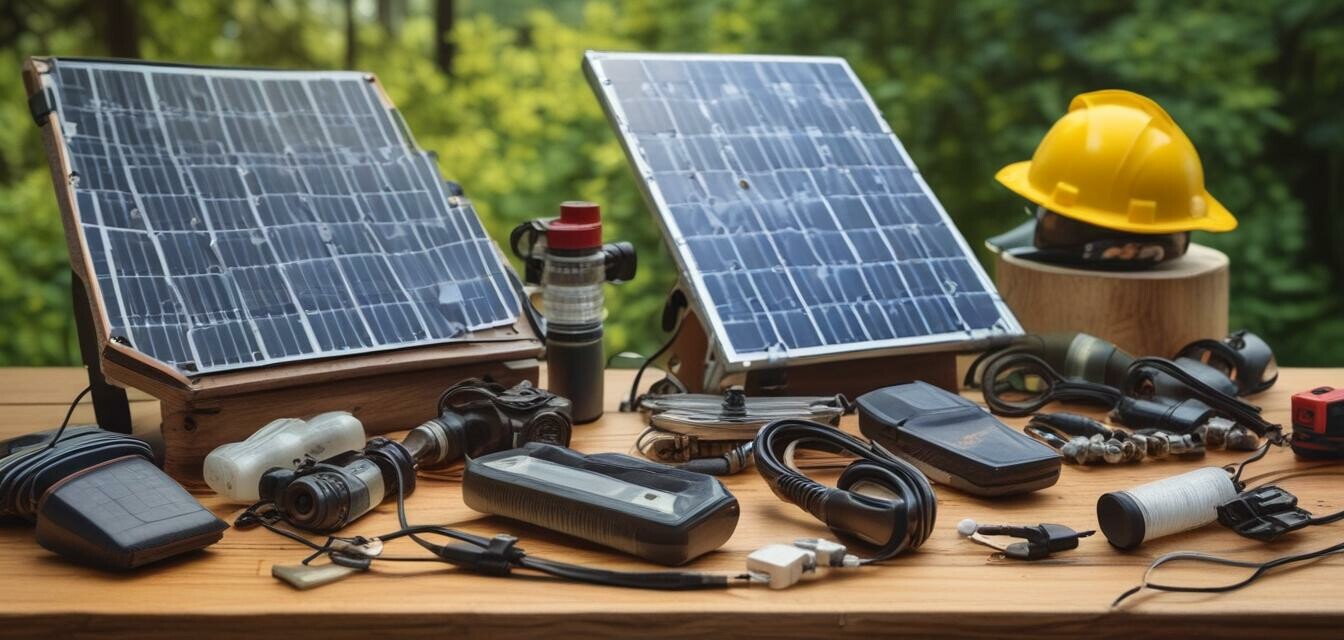
Essential tools for DIY solar installations
Key Takeaways
- Proper tools are crucial for a successful solar installation.
- Investing in quality equipment can save you time and frustration.
- Safety gear is essential to protect yourself during the installation process.
Are you a DIY enthusiast looking to dive into the world of solar energy? Whether you want to reduce your electricity bills or prepare for an off-grid lifestyle, having the right tools is essential for a successful solar installation. In this article, we’ll explore the must-have tools that will help you set up your solar system efficiently and safely. From measuring equipment to safety gear, we've got you covered!
Must-have tools for your solar installation
| Tool | Description | Importance |
|---|---|---|
| Solar panel installation kit | A kit typically includes mounting brackets, screws, and other necessary components for securing solar panels. | Crucial for proper fitting and stability of solar panels. |
| Multimeter | This device measures voltage, current, and resistance, helping ensure electrical connections are safe and effective. | Essential for troubleshooting and verifying solar system functionality. |
| Wire stripper | A tool used for removing insulation from electrical wires. | Important for creating connections between solar components. |
| Drill | A power tool used to make holes for mounting solar panels or other fixtures. | Necessary for the installation process, especially on roofs. |
| Level | A tool that ensures your panels are installed horizontally for optimal performance. | Vital for proper alignment of solar panels. |
| Safety goggles and gloves | Protective gear to keep you safe while working with tools and electrical components. | Mandatory for your safety during installations. |
| Tape measure | A measuring tool to ensure accurate distances when placing components. | Essential for planning and layout of the installation. |
Organizing your workspace
Having the right tools is only part of the equation. Organizing your workspace can significantly impact your installation's success. Here are some tips:
- Designate a specific area for your tools.
- Use toolboxes or racks to keep tools accessible but out of the way.
- Allocate enough space to work around your solar system components.
Safety precautions
Safety should always be your top priority during any DIY project. Here are some important safety precautions to keep in mind:
- Always wear safety goggles and gloves when working.
- Make sure to turn off all power sources before beginning installation.
- Use a sturdy ladder when working on rooftops.
Additional Resources
For more information on solar installation products, check out our detailed guide on solar panels or our battery storage page for energy management solutions. You may also want to learn about inverters to ensure your solar system operates efficiently.
Maintenance of your tools
Proper tool maintenance can extend the life of your equipment and keep everything running smoothly. Here are some tips:
- Clean your tools after each use to minimize wear.
- Inspect tools regularly for damage or wear.
- Store tools in a dry place to prevent rust and corrosion.
Pros
- Empowers you to take on solar installation projects yourself.
- Can save you money on labor costs.
- Gives you a better understanding of solar energy systems.
Cons
- Can be physically demanding.
- Requires a time commitment to complete installations.
- Potential risks if safety precautions are not followed.
Conclusion
Taking on a DIY solar installation can be a rewarding experience that brings you one step closer to energy independence. It’s important to equip yourself with the right tools and knowledge for a successful setup. Don’t forget to prioritize safety and organization in your workspace. With the right tools and precautions, your solar installation can be a smooth process.


